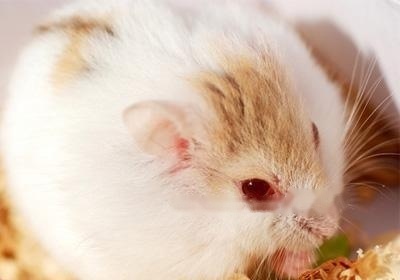
Amber Hamster
Length: 10-12cm
English name: Snow Squirrel
Lifetime: 8-10 years
Snow Squirrel its economic value can be seen from the outside to the inside, Its hair can be used to make pens and brushes, its meat can be eaten, and its skin can be used to make fur. The most important thing is that snow squirrels are very handsome, docile and well-behaved, and many people are willing to keep them as pets.
Chinese name: Snow squirrel
Kingdom: Animalia
Phylum: Chordate
Class: Mammalia
Order: Rodents
Suborder: Sciuridae
Family: Sciuridae
Subfamily: Sciuridae
Genus: Squirrel
Species: Snow squirrel
Distribution: Eurasia
Reproduction: Viviparous
SnowSquirrels also change their coat color in different seasons. As a squirrel, it is essential to have a fluffy and long tail. The limbs and front and rear feet are longer, but the forelimbs are shorter than the hind limbs.
Snow squirrels have well-developed ear shells, which can reach the eyes when folded forward, and have a tuft of long black hairs at the ends of the ears in winter. The back of the whole body is from the snout to the base of the tail, the sides of the body and the outer sides of the limbs are brown-gray, the base of the hair is gray-black, and the tip of the hair is brown or gray. The abdomen is from the back of the lower collar to the base of the tail, and the inside of the limbs are all white. The back and ventral surface of the tail are brown-black, the base of the hair is gray, and the tip of the hair is brown-black. The muzzle, cheeks and underside are as coloured as the back, but more blue-grey, the ear shells are black-grey, and the winter hair has large black tufts. Individual coat colors vary greatly, such as blue-gray, gray, brown-gray, dark gray, and black-brown. With regional differences, the coat color also changes. For example, the color of the squirrel in Liaoning is gray, while the color of the squirrel in southern my country is darker. In addition, the coat color is also affected by the season, gray or taupe in winter, black or dark brown in summer.
thisSquirrel is a typical arboreal rat species, inhabiting mountain coniferous forests and mixed coniferous-broad-leaved forests. To build a nest, it builds a nest among the branches. The nests are round in shape and the exit is on the leeward side, but some live in tree caves, and some are repaired with old large bird nests. Squirrels can make several nests each year, with primary and secondary nests, and secondary nests are used for temporary rest. Males rarely build nests and mostly use old nests. Daytime activities, the most active in the early morning, do not hibernate, but the winter activities are reduced, and when the winter is cold, they rarely come out of the nest.
snowSquirrel has no special requirements on diet, and the choice of food can be diversified without being too single. Snow squirrel like other pine trees likes to eat nuts For example: walnuts, chestnuts, etc., in order to prevent the brain from stinging, these foods should be fed frequently.
Domestic snow squirrels generally feed on the seeds of Fagaceae plants, but they also eat a lot of insects in nature, so it's best to feed them some animal food. If artificial feed is the staple food, apples and other foods should also be supplemented. In summer and autumn, you can also feed some melons and fruits, such as cucumbers, tomatoes and watermelons.
The snow squirrels are fed mixed feed, roughage and green juicy feed.
Mixed feed: It is generally composed of barley, wheat, corn, soybeans and skins, etc. The content is 25% barley or wheat, 20% corn, 15% soybean cake, 10% soybean, 20% drum skin, 6% fish meal, 3% bone meal and 1% table salt.
Roughage: mainly peanuts, sunflowers and walnuts.
Green and juicy feed: Chinese cabbage, carrots, rapeseed, mulberry leaves, and holly leaves.
The daily feeding amount for each snow squirrel is about 30 grams of mixed feed, 200 to 250 grams of roughage, and 150 to 200 grams of green and juicy feed. It is necessary to feed three times a day in the morning, at noon and in the evening, and it is necessary to have a fixed feeding point every day.